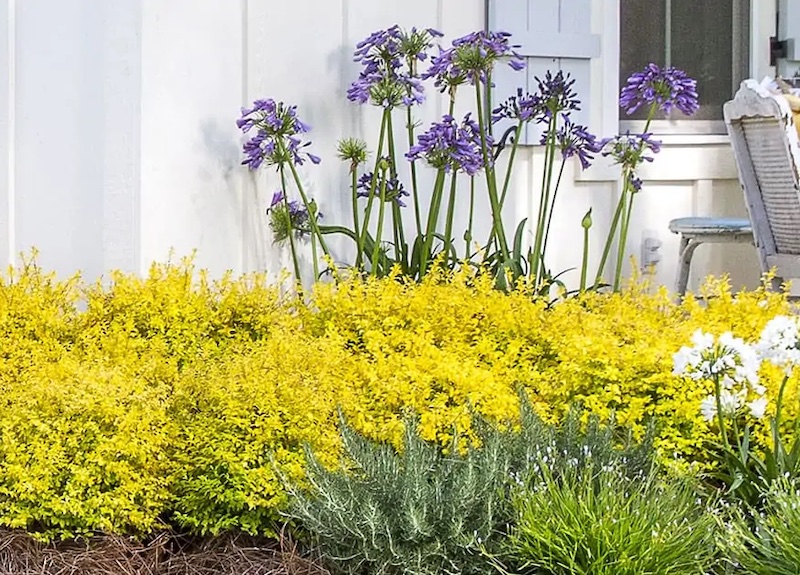Agapanthus Treatment Tips for Lush and Vibrant Flowers
Agapanthus Treatment Tips for Lush and Vibrant Flowers
Blog Article
Letting Loose the Secret to Effective Agapanthus Growing: Idea for a Flourishing Yard
In the world of gardening, growing agapanthus effectively calls for a critical method that encompasses various facets of plant care. With mindful interest to detail, one can open the secrets to nurturing these magnificent blossoms, causing a garden that grows with beauty and vibrancy. By recognizing the subtleties of agapanthus growing, one can produce an atmosphere where these plants prosper and grow generously. In the adhering to conversation, we will explore important tips and tricks that will certainly lead you in the direction of a flourishing agapanthus garden, providing understandings into finest methods, soil problems, sprinkling strategies, and more.
Growing Agapanthus: Ideal Practices
When planting Agapanthus, appropriate soil prep work is essential for guaranteeing effective development and development of these gorgeous blossoms. Agapanthus, frequently understood as Lily of the Nile or African lily, thrives in well-draining soil with a slightly acidic to neutral pH degree - Agapanthus. Prior to growing, it is crucial to amend hefty clay soils with raw material such as garden compost or peat moss to boost drainage and provide important nutrients for the plants
To plant Agapanthus, choose a place that receives complete sunshine to partial shade, as this will certainly promote healthy and balanced development and plentiful blooming. Dig an opening twice the size of the plant's origin ball and put the Agapanthus at the exact same depth it was previously growing. Delicately backfill the hole with soil, pressing down strongly to get rid of any air pockets around the origins.
Water the freshly grown Agapanthus extensively and continue to keep the dirt uniformly moist, specifically throughout the plant's energetic growing period. Agapanthus. Using a well balanced plant food once a month can further support the plant's development and blooming. By adhering to these finest practices for planting Agapanthus, you can create a sensational display of these fascinating blossoms in your garden
Ideal Soil Conditions for Agapanthus
For optimum development and blooming success of Agapanthus plants, guaranteeing the dirt conditions are suitable is crucial. Agapanthus prefers soil that is abundant in nutrients, so including a well balanced fertilizer during the growing period can advertise healthy and balanced development and dynamic blossoms.

Watering and Feeding Tips
To make certain healthy development and vibrant flowers, appropriate watering and feeding strategies are necessary for successful Agapanthus cultivation. Agapanthus plants profit from regular watering, especially throughout the expanding season.
When it concerns fertilizing Agapanthus, a balanced plant food with equivalent parts nitrogen, phosphorus, and potassium can be applied in the springtime to promote healthy growth and blooming. Slow-release fertilizers are suitable for supplying nutrients gradually over a prolonged duration. Prevent over-fertilizing, as this can result in excessive vegetation development at the cost of blooms.
Additionally, incorporating organic issue like garden compost into the dirt can enhance nutrient levels and improve dirt structure, assisting in the total wellness of the Agapanthus plants. By adhering to go to my blog these watering and fertilizing pointers, garden enthusiasts can guarantee their Agapanthus plants flourish and generate sensational displays of blossoms.
Trimming and Deadheading Strategies
Correct trimming and deadheading techniques play a critical function in keeping the health and aesthetic appeals of Agapanthus plants, complementing the essential methods of watering and feeding for successful farming. Pruning Agapanthus entails removing spent blossom heads, yellowing or dead leaves, and general shaping of the plant to promote better growth. Deadheading, the process of removing discolored flowers, not just boosts the plant's look but additionally motivates more blooming.
When deadheading Agapanthus, it is a good idea to clip off the blossom stem at the base utilizing sharp, tidy shears. This process reroutes the plant's power from seed production back right into root and foliage growth, advertising a healthier and more robust plant. Routine deadheading can extend the growing duration of Agapanthus and avoid self-seeding, which can browse around here lead to congestion.
In regards to pruning, Agapanthus typically gain from a light trim after blossoming to tidy up the plant and encourage fresh development. Cutting down the spent blossom stems and removing any type of broken or dead vegetation aids keep the plant's vitality and total appearance. However, it is necessary to stay clear of reducing into the crown of the plant, as this can deteriorate its wellness.

Protecting Agapanthus From Pests and Diseases
Implementing effective pest and condition management techniques is crucial to guarding the health and wellness and vitality of Agapanthus plants in farming. One usual insect that impacts Agapanthus is the Agapanthus borer, a caterpillar that passages right into the plant, creating damage to the flowers and leaves.
In addition to parasites, Agapanthus are at risk to illness such as root rot and fungal leaf spots. By remaining attentive and resolving insect and illness problems quickly, gardeners can aid their Agapanthus flourish and prosper.

Conclusion
Finally, effective farming my explanation of agapanthus needs appropriate planting methods, excellent dirt conditions, ample watering and feeding, regular trimming and deadheading, and defense from parasites and diseases. By complying with these suggestions and methods, gardeners can make sure a prospering garden loaded with lovely agapanthus flowers. Agapanthus. Remember to keep regular care and focus to information to advertise the health and wellness and long life of these magnificent plants
When growing Agapanthus, proper soil prep work is vital for making certain effective growth and development of these beautiful flowers.Water the recently grown Agapanthus extensively and proceed to maintain the dirt evenly moist, particularly during the plant's energetic growing period.For optimal growth and growing success of Agapanthus plants, ensuring the soil problems are excellent is essential. When planting or transplanting Agapanthus, guarantee the soil is well-prepared to give the essential structure for the plants to establish themselves efficiently. One common insect that impacts Agapanthus is the Agapanthus borer, a caterpillar that passages right into the plant, triggering damages to the blossoms and leaves.
Report this page